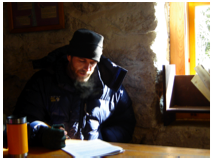More Primary Babble: Allen Ginsberg on Sketching
I sat up one night this fall and transcribed a section of a Ginsberg talk from the Naropa Archives. I don't think this has been in print before. Enjoy.
From "The Art of Poetry" Reading at the Naropa Institute
"What you are doing is putting your attention outside of yourself, you’re empathizing see, you’re observing what’s going on around you and you’re not purely hung up on the chatter and babble, yadder going on in your own head. So in a way that contradicts what I was saying yesterday: write down the babble in your own head. But I’m talking more primary babble, or first thought. I think that’s what Chogyam meant when he said, “first thought, best thought.” You might be thinking of your financial situation, but you would also notice the branches against the sky, and that would be a little bit more basic to what’s actually going on around you. So it’s a question of training your mind to stop paying attention to your own bullshit and open up and look around—to look outside of yourself. Almost any landscape… the poetry writing then becomes almost… or say one exercise can then be the practice of a still life or sketching what’s around you. You don’t have to be inspired all you have to do is sit down with a notebook anywhere, anytime, anyplace from the cabin of a Stratocrusier to a bathroom at Naropa, or a classroom, or a dining hall, or in bed and sketch what you see around you or remember what you just saw around you or actually just look up from the pen and try to describe in meticulous detail. An attempt to describe a brick pillar like that would lead you into some sort of psychedelic wonderland, really, in the sense that the attention required to figure out what is actually going on with the pillar, what it looks like, what’s attached to it, the wires running out of it, the aluminum plates on it, the mortar in between the bricks, the work that went into building the mortar, the curiosity—who put it together, was it a workman or was it some sort of mass production scene—could lead to all sorts of side associations too, which are outside of the scene you are sketching, but that since they occur in the mind can also be included.
That concept of sketching is something that Kerouac came on in around 1952 in his house when he suddenly became aware of the sound of a—the flumff sound—of a car door, a 1950s American car door, being slammed at 2 am. It was that muffled civilization sound. See they build cars so they don’t make a big iron clank when they close, but they have this sort of plastic flumff. Actually, the whole space age is sort of brought up with a piece of noticing like that. Whole civilizations are projected."

No comments:
Post a Comment